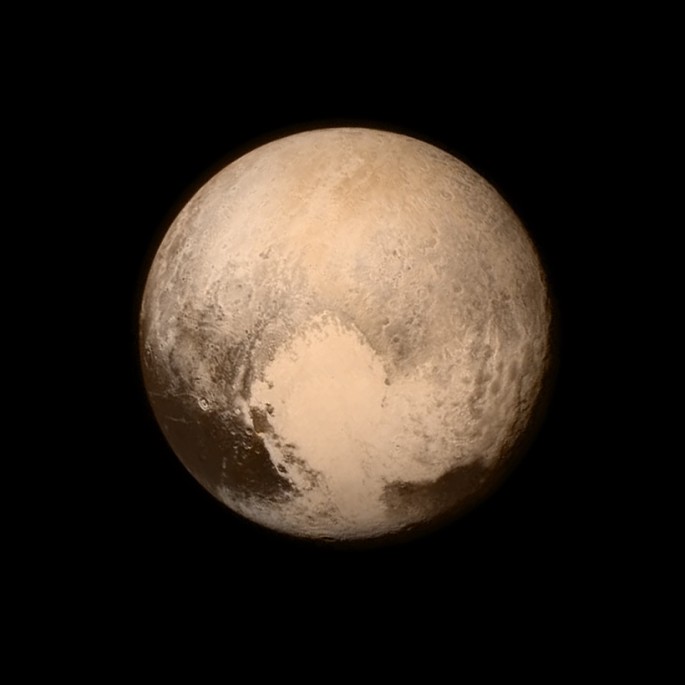New data from NASA's New Horizons spacecraft reveals that Pluto is apparently larger than previously thought where this can provide clues about the icy dwarf planet.
New Horizons is the first spacecraft to visit Pluto where it has travelled for 9 and a half years, spanning nearly 3 billion miles across the solar system. The probe was launched in 2006 when it was still considered a major planet however, the International Astronomical Union downgraded it into a dwarf planet.
What sparked this controversy whether Pluto is a planet or not is the discovery of another dwarf planet called Eris. Eris is located in the Kuiper Belt where it contains millions of rocks and debris beyond Neptune. In 2005, Eris was discovered that also possesses at least one moon called Dysnomia.
Since that discovery, astronomers have debated the sizes of Pluto and Eris with each other and whether they are considered to be planets or not. In a span of ten years, the two alien worlds have been competing for the title of being considered as the largest body found in the Kuiper belt.
To date, Pluto is still considered by astronomers as the largest body in the Kuiper Belt.
Pluto is now measured at 1,473 miles in diameter which is more or less 12 miles. Scientists say that Pluto is 30 miles wider than the estimated measurement of Eris. Eris was first detected by an astronomer, Clyde Tombaugh in 1930 however, astronomers were not able to obtain the exact size of the body since it is enshrouded with nitrogen in its atmosphere, making accurate observations nearly impossible.
According to principal investigator for New Horizons, Alan Stern from the Southwest Research Institute, this flyby is specifically designed to study Pluto's moons in detail before the spacecraft's closest approach to the dwarf planet where we can also gather more data about Pluto's geology as well.
Since Pluto possesses a larger size than Eris, this might offer clues of how they have different compositions from one another. Also, Pluto is also thought to contain larger amounts of ice that previously believed.
Before New Horizons conducted its epic flyby of Pluto yesterday morning, it has previously detected nitrogen in its atmosphere five days prior where mission scientists were able to confirm that polar cap was indeed a polar cap made from methane and nitrogen ice.
Apart from Pluto's largest moon, Charon, that appears to have craters and is grayish in color with a darker polar ice cap, mission planners also observed some features on the other smaller moons namely Nix and Hydra. Using the LORRI (Long Range Reconnaissance Imager) camera aboard the probe, astronomers were able determine that Nix measures 20 miles across where Hydra on the other hand measures 30 miles in diameter.
Last night, mission control was able to receive confirmation from New Horizons that it successfully passed by Pluto during its epic flyby where the closest approach was at July 14 at 7:50 A.M. EDT.



























